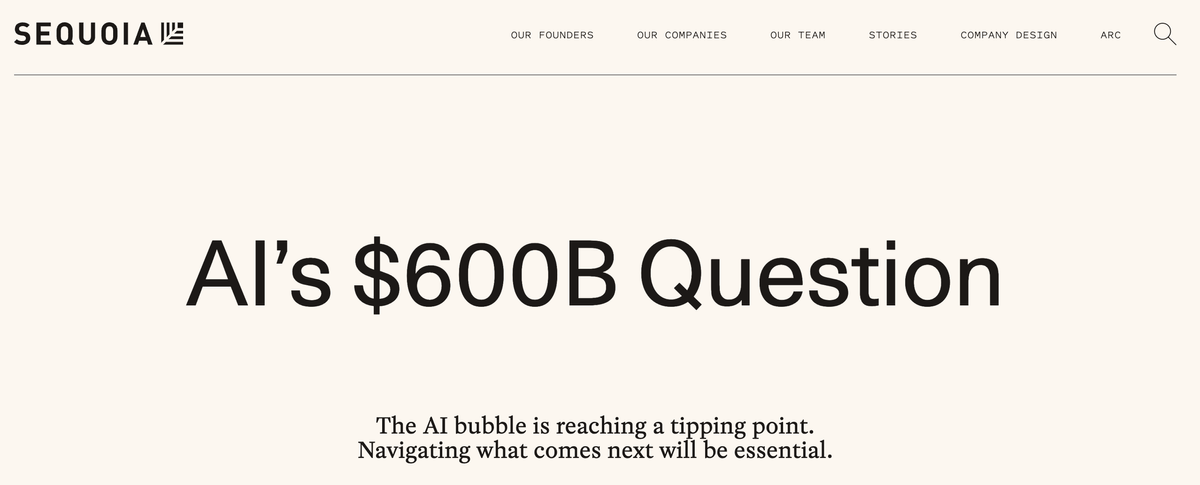AI's $600B revenue gap: Why Conversational AI is already delivering value

I picked this one up from VC Michael Jackson's post on LinkedIn earlier today. He was highlighting David Chan's article on Sequoia's website about the future of the AI industry.
Back in September last year, David wrote a similar post pointing out that GPU capacity - the fundamental tech that so much AI infrastructure relies upon - was at risk of being 'overbuilt'. He's updated his thinking with this recent post.
David writes:
This week, Nvidia completed its ascent to become the most valuable company in the world. In the weeks leading up to this, I’ve received numerous requests for the updated math behind my analysis. Has AI’s $200B question been solved, or exacerbated? If you run this analysis again today, here are the results you get: AI’s $200B question is now AI’s $600B question.
Where is that revenue going to come from?
Well, one answer is Conversational AI.
Whilst many companies are busy speculating with all sorts of ideas for how to use AI in a huge variety of industries, this corner of the AI marketplace is absolutely delivering astonishingly good value.
If you look at some of the key players in the Conversational AI market – and then look at their revenues – you'll see that they're doing very well indeed.
What's more, their clients are generally very happy to pay for the services they're getting - because they're generally getting fantastic results in return.
Adding virtual assistant technology to help answer customer queries – and help customers get things done – is resulting in a lot of additional value creation. It's also helping those with call centres either complement or dramatically reduce their reliance on the old way of doing things.
- Reduce the need for employees to focus on repetitive, simple customer enquiries
- Increase the availability of employees to answer high-value issues and engage in high-value conversations
- Help customers serve themselves by swapping the Human-as-an-API (i.e. call centre) to getting the Virtual Agent to orchestrate things
The Conversational AI marketplace is already delivering.
There's a huge, huge opportunity to do more, though.
Over the next few years, I fully expect Conversational AI capabilities to be added by so many players in so many different industries. Whilst industries such as Financial Services, Telecoms, and Utilities are already readily deploying Conversational AI, any company serving end customers will, I reckon, benefit from adopting the technology.
I am expecting any 'help' function on any customer-facing website to include a Conversational AI capability soon. Indeed, when I visit a high profile company's 'contact us' or 'support' pages and find they're still insisting I phone them... I'm surprised. Very surprised. There is so much growth still to come with Conversational AI. I'm not sure many investors understand or recognise this reality, though.
David Chan points out OpenAI's rumoured $3.4B annualised revenue (as reported in June by The Information). This is very impressive. Recent research by Databridge predicts the Conversational AI marketplace is already generating about $7B of revenues for 2024. (Although, I don't know if this includes or excludes OpenAI!)
If we play the game and assume the Databridge figures are accurate then roughly 1.2% of David Chan's $600B gap for 2024 is being filled by Conversational AI this year. I do expect this figure to rise swiftly though.
Let's watch and see how things go.




